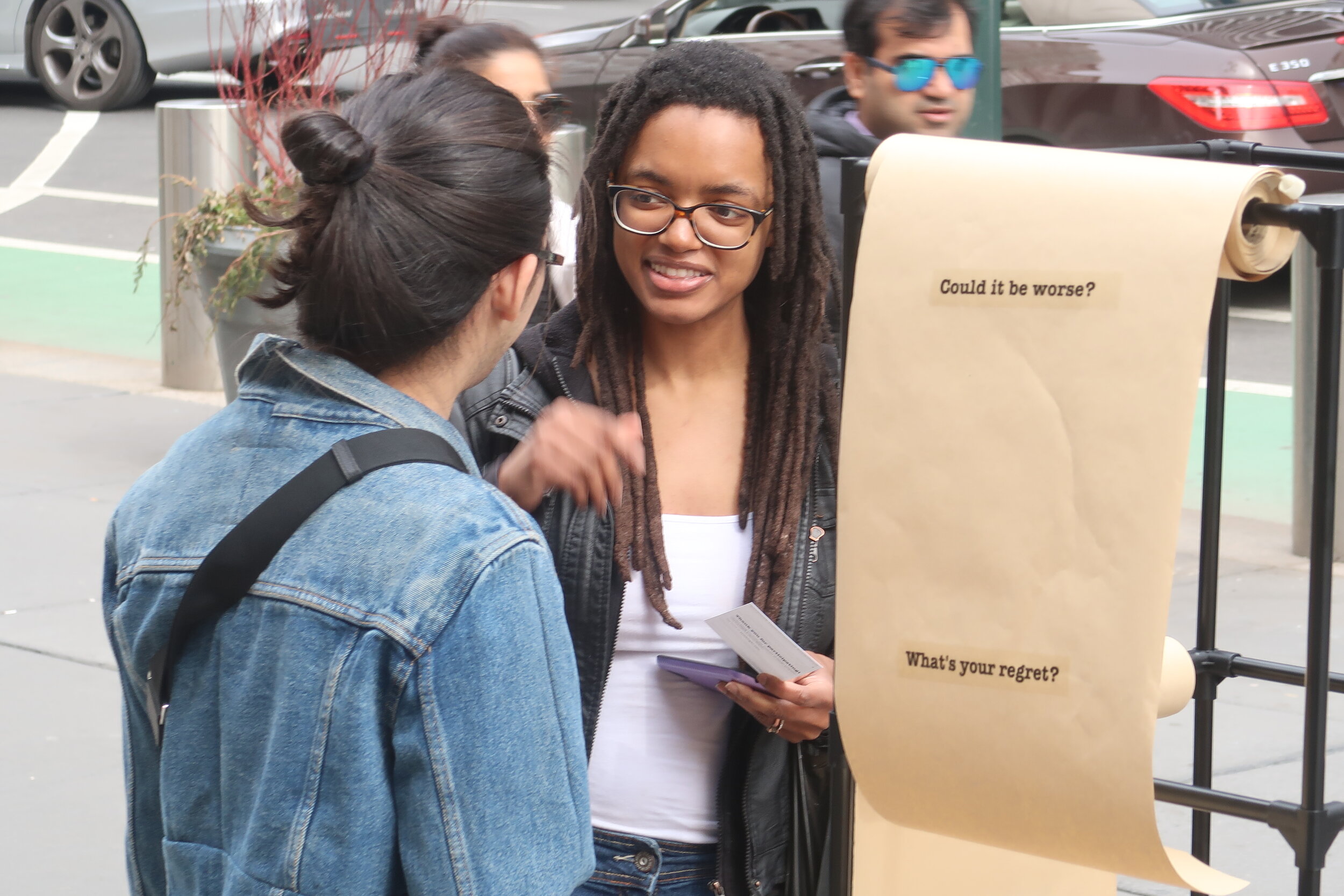Actually, not that bad
A public experience that helps alleviate pains from regret.
“Everyone has regrets–In fact, regret is one of the most felt, but least discussed emotions there is.”
–Joan Borysenko, psychologist and author of Inner Peace for Busy People.
Overview
“Actually, not that bad” is a public event that aims to alleviate people’s pain from regret.
Timeline
2 weeks (2019)
Categories
Design Research
Experience Design
Role
Experience Designer
Facilitator
Tools
Handcrafts
Adobe Suite
(Ps, Ai, Pr)
Responsibilities
Creating Props
Facilitating the event
Framing Questions
Designing Prompts
Editing Video
Challenge
Regret is inevitable and is something we’ve all experienced; we cannot change the past nor eliminate the regret, what we can do is to embrace the regret and move on. However, people still get stuck to past regret quite often, and there’s no way to help people get through that mental barrier.
Opportunity
How might we spread a scientifically proofed regret-relieving methodology to people?
Design Process
research & Design brief
What methodology works?
Downward Counterfactual Thinking : Ask yourself “How could it have been worse?”
This is what researchers call a “downward counterfactual thinking.” This thinking methodology benefits us by improving our mood, further kill the pain after we’ve learned lessons from something we did wrong; it kills the negative feelings associated with regret and turns disappointment into gratitude. Take “I can’t believe I crashed my car. I’m so stupid.” and turn it into “I’m so lucky I didn’t die in the accident. How wonderful!”
“Counterfactual thinking opens the door to modifying future behavior by focusing on a revision of the past.“
–Mastering The Art of Quitting : Why It Matters in Life, Love, and Work.
How to spread this methodology to people?
Hold a public experience.
It would be really rude and abrupt to ask random people "Could it be worse?". Especially for someone who is already having a bad mood. Hence I decided to hold a public experience to spread the knowledge in a fun and more accepting way to people.
Where to spread the methodology?
A plaza next to Penn station.
I choose the location to be a plaza right next to Penn Station; I believe a place that aggregates people from all around the world can definitely provide this experience a great interaction and new perspective.
what am I going to do?
Progressively switching people's perspective to a worst-case scenario.
Problem
It's hard for people to create empathy and gratitude if they perceive worse scenarios from their current state.
Solution
Reframing the question and anchoring participants to the worst scenario first, then make them realize how lucky they are right now.
Props & Prompts
The prop is a huge rack with rolls of paper, and prompts are hidden in each of them.
The prompts will be progressive sentences that bring people into the worst scenario, and then suddenly bring them back to reality at the last prompt.
The journey of participants' mental state transformation
Insights
1. Some people don't even know their regret
2. Some people don't even have regret
3. The older the people are, the less chance the people have regret.
4. Some people don't want their regret to be revealed.
5. Age between 23-35 has a higher chance to have regret.

















